 Editor's Note: This post is part of a weekly series titled the Promised Land where author David G. Woolley sheds his bloggish sensibilities and delves into the research and inspiration behind the characters and story lines of his Book of Mormon Promised Land Historical Fiction Series. This week it's ancient blacksmithing.
Editor's Note: This post is part of a weekly series titled the Promised Land where author David G. Woolley sheds his bloggish sensibilities and delves into the research and inspiration behind the characters and story lines of his Book of Mormon Promised Land Historical Fiction Series. This week it's ancient blacksmithing.The refiners fire. Its a metaphor so deeply rooted in the ancient world of blacksmithing that it appears in scripture (see Malachi 3:3). In this picture, one of very few from the ancient world, a blacksmith holds a crucible over hot fires, watching for the moment when his reflection appears and the silver is purified. No wonder ancient prophets liked the metaphor. Spiritual refinement of Godly attributes are often reflected in your countenance, your choices, and in your discipleship.
The first labor unions were formed among ancient Phoenician blacksmiths who united themselves into guilds to protect their secrets. Of all the smiths in the ancient world, none were more acclaimed for their secrets than the Phoenicians living along the northeast coast of the Mediterranean Sea in what is now Lebanon. Phoenician blacksmiths refined the art of steel making, a secret they kept closely guarded and one that garnered them a great deal of wealth. King Solomon hired blacksmiths from Sidon, a famous port city along the Mediterranean coast, to assist him in building the temple in Jerusalem (William J. Hamblin, "Sacred Writings on Bronze Plates in the Ancient Mediterranean")
The refining of ore reveals more about the wealth, industry, and advancing technologically of ancient cultures than any other single archaeological artifact except a written record. A rolled silver scroll excavated from a Jerusalem tomb. A copper plating on an alter in Mesoamerica. Iron nails. Steel swords. Brass buttons. All products of the refiners fire from one of the most secretive trades in the history of the world. In the Promised Land Series, Jonathan the Blacksmith was an anomaly, a Jew who learned his trade among expert Phoenician smiths in the port city of Sidon before migrating to Jerusalem.
Oaths of secrecy bound blacksmiths to never reveal their art. That may be why little is recorded in the written record and even less depicted in the artwork of the ancient past. Blacksmiths, at least the ones who understood the arts of refining silver, gold, and the most coveted of all, steel, performed their work in the secrecy of their shops. No wonder Nephi was impressed by Laban's sword. Its fine steel workmanship was the product of a secret art.
Among ancient blacksmiths there were two secrets that allowed for the smelting of high-quality steel. The first was the purifying of fuel. Pieces of hard coal, or what modern steelmakers call ingots, burn at higher temperature than black coal allowing ancient smiths to heat their smelting ovens to temperatures hot enough to refine iron ore into steel. To prepare the ingots, blacksmiths burned the impurities out of coal until only hard ingots remained. The purified hard coal fuel did not catch fire quickly, but once lit, it burned at extremely high temperatures.
The other secret was black ash. Iron ore was full of carbon, but in far too great a quantity to form strong bonds in the metal. The smelting process burned away virtually all the carbon, but by adding just the right amount back into the molten ore, the correct molecular bonds formed during the cooling process. The ancient blacksmith may not have understood the science of his art, but by trial and error he discovered the secrets that allowed him to smith the most prized metal of the ancient world. Steel.
Blacksmithing was also a diplomatic tool. If you were an outsider hoping to integrate into ancient Jerusalem society, mastering the art of refining metals provided instant credibility. It may have been an even more powerful integrator among peoples in the New World. Ancient Mesoamerican communities welcomed outsiders, gave them land, helped them learn the new language and assisted them in becoming fully integrated members of society, sometimes even offering them governing status, if they brought with them new technologies. Chief among them was the art of blacksmithing.
Take Kaminaljuyu. An ancient archaeological site within the limits of Guatemala City. Nearly every Book of Mormon scholar agrees Kaminaljuyu is the most likely site for the City of Nephi. Sometime around 575 BC an outside kin group immigrated to this highland Guatemalan valley and introduced to the already existing kinfolk tribes a written language, irrigation technology, crop cultivation, new religious practices and, most compelling to the largest segment of locals, metals. These cultural innovations led archaeologists to name Kaminaljuyu as the the birthplace of Mesoamerican civilization.
The thousand year span beginning about 550 BC and extending to about 450 AD is considered the pre-classic period when kinfolk tribes began adopting the technologies and cultural ideas which ultimately led to a shared Mesoamerican culture known scientifically as the Mayan civilization. They continued to war among each other, spoke over a hundred different language dialects, and paid allegiance to local kin group kings. But a shared acceptance of written language, inter-tribal commerce, shared religious beliefs, and the establishment, from time to time, of a fragile regional government bound tribes together into what scholars call the most advanced civilization of any ancient people in all of the Americas. No other group, except the Incas many centuries later, came close to rivaling the Mayan culture. And not even the Incas developed the skill of writing.
Nephi and his people likely intermingled with the already existing peoples living in the cool, agriculturally rich highlands sometime around 575 BC. Nephi organized a city on available lands, introduced an advanced agriculture, and shared his understanding of blacksmithing which made friends and likely many religious converts to the Law of Moses.
The major writings of Nephi and of his brother Jacob (see 2 Nephi and Jacob) during the City of Nephi period may have been focused primarily on concerns over how to deal with converts. Once the dilema is resolved the subject is never mentioned throughout the remainder of the Book of Mormon. Jacob includes the allegory of the Olive Tree detailing the grafting-in of new adherents. Nephi assures his people that the Gentiles have a place in God's plan. Jacob teaches the fundamentals of the Law of Moses. Nephi points out the assistance his people receive from Gentiles. Jacob teaches the basic doctrines of salvation. Nephi quotes Isaiah's prophecy regarding Gentiles. Jacob prophecies the role of Gentiles on the American continent. Nephi builds a temple.
It was a time of mixing of cultures, sharing new technologies like blacksmithing, learning new languages. Differing religious beliefs collided. A local named Sherem learned to speak the same language as Nephi and his people (Jacob 7:4), likely Hebrew, and then opposed the religious ideas imported to the New World by these outsiders. Jacob encouraged his people to search the scriptures and he fortified the Land of Nephi against the more militant non-believers among them (Jacob 7:24 & 25).
In Day of Remembrance, the soon-to-be released fourth volume of the Promised Land Series, Jonathan the Blacksmith reminds us of the powerful metaphor found in the refining of silver.
Jonathan filled a crucible with silver ore, clamped tongs around the vessel and walked it over to the forging oven. What a temperamental ore this silver. He couldn’t smelt it in the oven like he did iron. Fire silver too long or too hot and it cracked into pieces when it cooled. And if he didn’t fire it long enough it gathered into clumps and the impurities ruined the finish. Jonathan slowly rocked the crucible over the fires like a mother rocks a newborn. There was only one way to know when the silver was purified. Jonathan starred down at the molten mass, the impurities slowly bubbling out in short puffs of hot steam. As soon as he saw his reflection in the surface it was done. Like looking at the surface of a muddy pond, he waited for some miracle to change the clouded ore to a clear, shinny finish. The change only lasted a moment, hardly long enough to pull the crucible from the refiner’s fire and cool it in a spring-water bath. And if he waited too long the silver was sure to cloud again, the reflection of his image lost and the silver ruined. Jonathan leaned in closer, watching for the reflection of his eyes, the length of his narrow nose and the end of his chin to appear in the silver.
And He shall sit as a refiner and purifer of silver (Malachi 3:3).
Life is a crucible. Christ is the blacksmith holding you over the fire, rocking the crucible like a mother rocks a newborn, waiting for the miracle of his atonement to change the clouded ore of imperfections to a clear, shinny finish, before quickly removing you from the heat and tempering you His. Once your life is sufficiently refined its not your image you'll see in the glossy silver reflection.
Its His.
__________________________
Join author David G. Woolley at his Promised Land Website. He is also a weekly contributor to the Latter Day Authors blog and he writes commentary and opinion at the Utah Ranger's Far Post blog

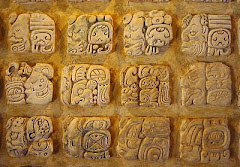
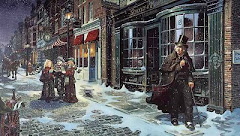


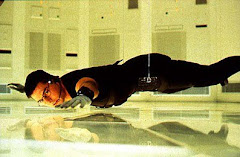
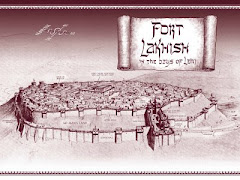



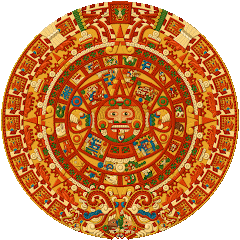
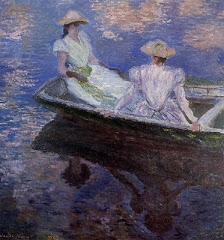
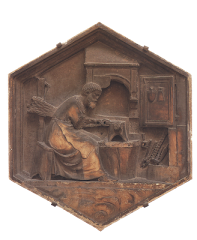

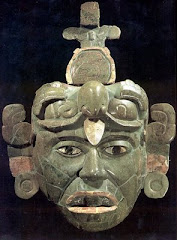



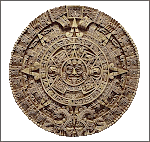

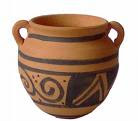
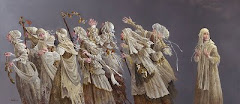
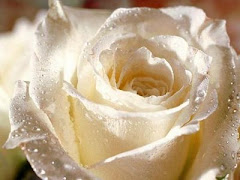

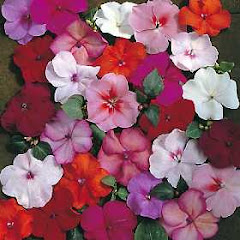
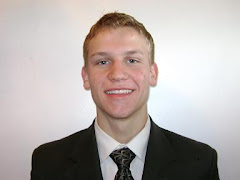
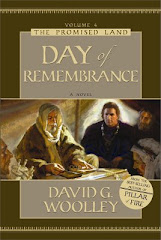


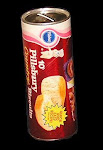
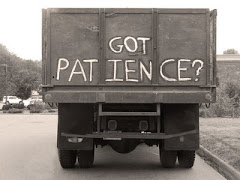
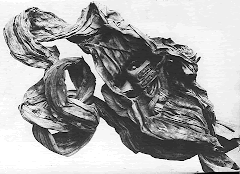
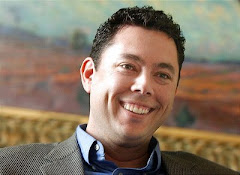



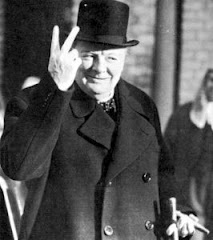
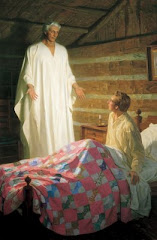
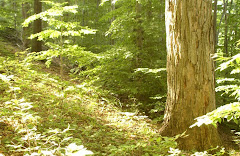

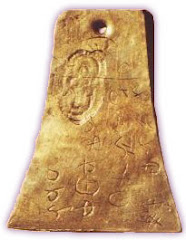


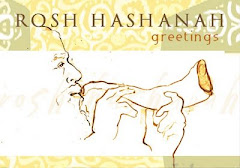


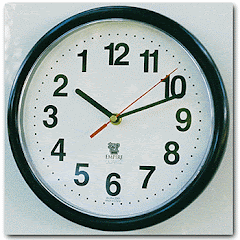
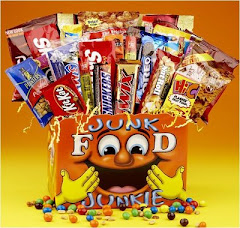
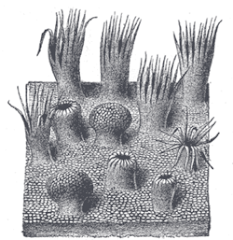
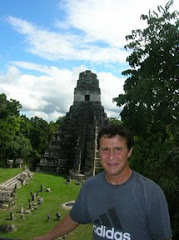


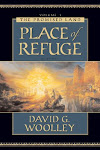
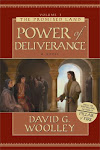

11 comments:
Breathtaking, as always.
A question: Tell me about the picture. (Okay, so that's more a request than a question.) Where is it from and what is made of?
Loved the excerpt -- especially the adverb. (I couldn't help but notice you only know one. :)
I simply cannot wait for the day that book arrives. I hope DB ships the minute it's printed.
Hey Kerry:
If you have trouble breathing its likely so much hyperventalating over that disgusting adverb. Sorry. I'll go back and remove it. Next time use a paper bag. It will help with the breathing.
The artword is phoenician of course. Probably a self portrait of Jonathan the Blacksmith himself from around 600 BC. There is hardly any art of blacksmithing from the ancient world. No one wanted the secret to get out.
That sad news is that I didn't use this metaphor with the kind of power it deserves in this book. But I'm going to make up for it in volume five, I promise. This crucible metaphor was an introduction to what happens to Jonathan in the coming novel. Foreshadowing is permitted in our profession, right? If you accuse me of repetition, I am guilty. Its one of my worst writing sins.
I will have the first copy of this book in my grimy hands today at 2:00 pm. It will be a welcomed relief to see it in print.
All the best,
David G. Woolley
I am very jealous of your grimy hands. (And thrilled to know it's that close.)
You still didn't tell me the material of the . . . fresco? I know it's not important, but I'm fascinated for some reason and really want to know. Where did you find it?
I will cry if you remove that adverb. I really will.
You have a gift, Brother Woolley. I stand amazed at your profound knowledge and your ability to paint such vivid word pictures. Someday, I hope to write that way.
And, I love the last paragraph--it is so true.
David, I do have a comment to make about this blog, but I have to run to a meeting right now- also need to download and send some pictures to
It was great to meet you this afternoon. I'll get to that comment after my meeting with you know who.
Wow. It must have been a while since my last decent post. You guys are far too kind.
First Kerry: Fresco. That's the one with only one calorie, right? The nutrition facts also include ancient bronze, a mixture of silver and copper with maybe a little nickel thrown in for FDA approval. Got it?
Rebecca: You do write beautiful, vivid word pictures. You just like making the rest of us feel good too. We also like our anonymity protected (wink, wink)…
Sandra: Okay, now I'm really befuddled. There was an incident today at a certain conference where a woman wearing a name tag with [name withheld] on it, interrupted the entire event to snap a photo and discretely reveal that she was on a mission for she who will not be named. Which, I am assuming, means that you work for that masked marvel. I'm also assuming that this Sandra is that [name once again withheld]. Am I right? Your online blogger photo, even in blowupable size, is still just teensy, weensy, so there's no telling if the woman who accosted our event today is actually you. I think it is. Did you pass along the message to she who will not be named? Did you tell her that she is brilliant, direct, insightful and charming? Good thing. Now you're going to tell me that you are not the same [name withheld one more time] snapping photos woman I met today. My bad.
If you do happen to meet she who will not be named, please tell her that I'm getting closer. But the secret will remain forever a secret. Even once she's been unveiled....
David,
yes, I am the one that accosted te event today. I really had no intention of doing that, but when she who will not be named realized that she would be in a meeting while you were signing, she asked m to do the honors for her. How could I resist? She has great powers. Almost hypnotic at times.
I am looking for new profile picture, but I don't photograph well and do you know how much a good photographer with airbrushing skills costs? The great powerful one doesn't pay that well. Oh, and if you read my blog by chance, you will never, ever see her mentioned in any way- part of the non-disclosure document. But you would see gushing about favorite authors, accosting of events, and possibly even some hints dropped here and there.
Ok, I'm going to be serious here.
You have a way of writing that speaks to the very soul. I have loved your work from the very first pages of Pillar of Fire.
I have read the Book of Mormon many times. Usually it was for a class-seminary, religion class at college, teaching a primary class. After I had children the reading was slower as I read with little ones. Earlier this year I decided to read it straight through like a novel. I was amazed by how many things were in there that I had missed over the years. So I did it again. Still more treasures were found.
Now, with your thoughts on Nephi and Jacob being concerned with converts, I will re-read those chapters with new eyes. That is just one of the things I love about your writing, the ability to help the reader see things in a new way, ways never thought of before. Thank you.
Post a Comment